Steel is an alloy of iron and carbon and a basic part of industries such as construction and the military due to its strength, durability, customizability, and quick fabrication. Of the several types of steel available in the market, the alloy steel vs stainless steel comparison is one of the many comparisons common among manufacturers who want to work with steel.
Selecting any of the two types of steel should only occur after understanding their properties in relation to the project. As a result, this article breaks down everything you need to know about the comparison of stainless steel vs alloy steel. It shows the characteristics, behaviors, and differences between alloy steel and stainless steel so you can choose any of them for your project.
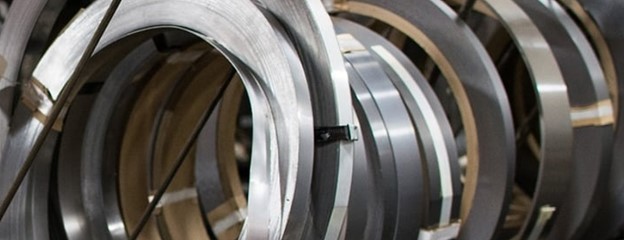
To successfully choose the right type of steel after the alloy steel vs stainless steel comparison, manufacturers must thoroughly understand everything about them. As a result, this section will discuss the composition and classification to show the difference between alloy steel and stainless steel.
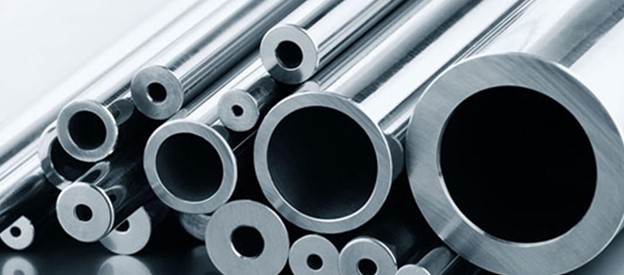
An alloy steel is a type of steel that contains more than one alloying element, aside from the carbon and iron in carbon steel. Such alloying elements help improve certain characteristics not present or low in the parent steel materials. Examples include strength, wear resistance, toughness, and hardness.
Alloy steels are classified into high and low alloy steels based on the percentage of alloying elements (not the carbon and iron) present.
Using over 20 alloying elements can enhance carbon steel’s mechanical properties. Each alloying element has the unique properties it bestows on carbon steel. Below are the five most common alloying elements:
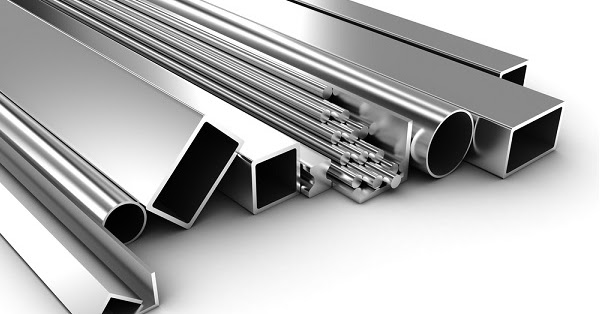
Stainless steel is a high alloy steel known for its extreme corrosion resistance and aesthetic appeal. Generally, it contains at least 10.5% Chromium, responsible for the hardness and corrosion resistance, less than 1.2% Carbon, and other alloying elements.
Depending on the needed properties and the grade, stainless steel can also contains other alloying elements such as titanium, manganese, and nickel. The presence of Chromium leads to the formation of chromium oxide when in contact with oxygen. This process, known as stainless steel passivation, helps to protect the metal and allows it to self-repair itself. Due to its properties, stainless steel is important in the following ways.
Many types of stainless steel materials are classified into five major groups. Below is a short explanation of the types of stainless steel.

The mechanical properties are the major form of alloy vs stainless steel comparison. Although each type of alloy or stainless steel can differ, below are a general representation of their comparison in terms of their mechanical properties:
Tensile strength denotes the ability of a material to withstand tensile stress before breaking, and it depends on the alloy and the heat treatment process. Alloy steels have higher tensile strength (758-1882) than stainless steel (515-827). As a result, alloy steels have more structural applications.
Hardness is a measure of a material to resist wear and abrasion and depends on the material composition and heat treatment. Due to less than 5% alloying elements, alloy steels have a higher hardness ranging from 200HB to 600HB (Brinell hardness) and wear resistance than stainless steel. Stainless steel ranks 8 on the Mohs hardness scale and 150HB to 300HB on the Brinell scale, which renders it less hard than most metals, although it is harder than materials such as copper and aluminum.
Ductility measures the ability of a material to elongate without undergoing fracturing, depending on the heat treatment. Alloy steels have a higher ductility than stainless steel. As a result, they are more suitable for applications that require forming shapes without breaking. This is evident in their applications in precision-required engineering in making delicate components.
The higher hardness of alloy steels compared to stainless steel increases impact resistance, making them more suitable for applications that receive regular shock or impact. Stainless steel has a higher chance of rupturing when used in such cases due to its lower hardness and toughness.
Fatigue strength measures the ability of a material to resist stress for a given number of cycles. The fatigue stress is the highest stress the material can resist. For example, stainless 316L has a fatigue strength of 146.45Mpa. Generally, stainless steel has lower fatigue strength compared to alloy steel. However, some grades, such as the duplex SS, have high fatigue strength due to their microstructure.
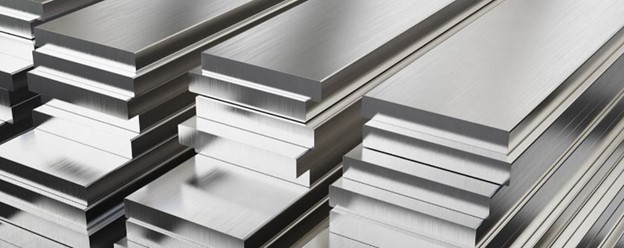
Another major the two steel comparison is in its corrosion resistance properties, and it also depends on the type of SS and alloy steel. Below is a general representation of their comparison.
Stainless steel was made to beat corrosion and rust due to Chromium, which forms about 30-80 nanometers of oxide layer on exposure to oxygen. As a result, they have a higher corrosion resistance than any other alloy steel, which doesn’t contain Chromium in that high percentage. Unlike alloy steel, they do not require a protective finish after manufacturing. Nevertheless, each grade of stainless steel has its corrosion resistance.
Pitting and crevice corrosion are localized corrosion that is common to stainless steel. Pitting occurs due to the localized breakdown of the protective coating of the stainless steel material due to the presence of chloride ions and other ions. When such occurs, the material becomes comprised, leading to corrosion.
Crevice corrosion occurs at joints where two metal parts, such as fasteners, are in close contact. The presence of crevices promotes the accumulation of chloride salts, moisture, and other pollutants, which promotes the breakdown of the stainless steel. Generally, the presence of Chromium reduces the chances of pitting and crevice corrosion compared to alloy steel.
Galvanic corrosion occurs when a metal’s presence leads to the other’s corrosion. For this type of corrosion, there must be a metallic anode, cathode, and electrolyte. Alloy steel is more subjectable to galvanic as it can easily give out electrons compared to stainless steel, where Chromium prevents such electron giveaway. Due to galvanic corrosion on alloy steel, stainless steel is often not combined with alloy or carbon steel. Furthermore, since it has a noble electrochemical potential, it is less susceptible to galvanic corrosion.
Stress corrosion cracking occurs in many metals, such as alloy steel and stainless steel, in an environment. It occurs when low alloy steel is placed in water, or stainless steel is placed in neutral aqueous or acidic solutions. Stainless steel is more resistant to stress corrosion cracking, especially the ferritic grades such as 430 and 444.
Many factors can affect the corrosion resistance of a metal, such as stainless steel. By understanding these factors, it is possible to control the rate of corrosion associated with a material. The factors include:
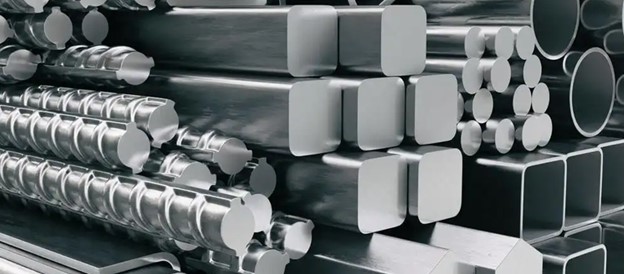
Heat treatment is a way to increase the mechanical properties of the alloy and stainless steel. Below are the distinctions in the alloy steel vs stainless steel comparison.
Both materials are highly weldable. However, stainless steel is more weldable than alloy steel to the lower carbon composition and the presence of Chromium which creates a stable oxide layer that can resist corrosion. Nevertheless, the weldability depends on the grades, as martensitic and duplex SS are less weldable.
Machinability denotes the ability to cut or machine a material. Stainless steel has a lower machineability than alloy steel making it less compatible with processes such as CNC machining. For example, 304 stainless steel has a 40% machinability rating compared to alloy steels such as 1018, with a 78% machinability. Nevertheless, some alloys, such as HSLA steel, have lower machinability.
Formability denotes the ability of the material to undergo deformation without being damaged. Stainless steel formability depends on the available grade, with martensitic steel having the least formability.
Both types of steel are applicable under different scenarios. Below are the common uses of ally steel and stainless steel and the selection criteria.
Overall, alloy steel is common in various industries requiring strength, durability, and wear resistance. Alloy steel finds common application in the following areas.
Stainless steel is common in many industries due to its excellent corrosion resistance. Some common applications of these materials include.
Choosing the right types of steel for your project involves understanding the different selection criteria.
Before choosing between alloy or stainless steel, you should also compare the cost and environmental effects.
Due to a lesser alloying element, alloy steel grades are less costly than standard stainless grades. Generally, the price depends on factors such as grades, avialian, and manufacturing process, but stainless steel can cost between $800 to $2,500 per ton. On the other hand, alloy steel costs between $600 and 800 per ton. ·
The lifecycle cost of a material is the total cost of owning the material. This includes its initial price, maintenance and repair cost, and disposal. Stainless steel has a higher initial cost. However, it self-repairs and is 100% recyclable. Therefore, the overall lifecycle cost is lower than alloy steel.
Compared to alloy steel, stainless steel has high environmental advantages due to its properties. Its recyclability reduces the need for new raw materials. Furthermore, its durability and corrosion resistance makes it sustainable. Stainless steel also has low toxicity, reducing its bad environmental impacts. Overall, stainless steel has a low environmental impact and is highly sustainable.
Choosing the right material and using the right production service are determining factors in a project’s success. At RapidDirect, we offer on-demand metal fabrication services, including CNC machining, die casting, and sheet metal fabrication. We also provide different types of steel for selection and recommend the best material for any metal project. Navigate to our online quotation platform for a quick quotation that denotes different materials, finishes, quantities, etc., and a DfM analysis.
Alloy steel has several advantages over stainless steel and is a material worth considering for a variety of applications.
Stainless steel is also a widely used material that has several advantages over alloy steel.
Alloy steel and stainless steel share many similarities together.
Both elements are alloys of irons, making them iron-based alloys. However, they can contain other elements in a different proportion, which determines their properties.
Both types of steel have enhanced properties based on the added alloying elements. For example, the presence of Chromium greatly enhances the corrosion resistance of both materials.
Alloy steel and stainless steel are applicable in different scenarios based on their properties. Both materials have found use in the construction, machinery, and automotive industry and can be fabricated into various shapes and forms.
Both materials have higher fabrication and welding properties compared to carbon steel. However, alloy steel is better.
You can subject both materials to a heat treatment to alter properties such as hardness, ductility and brittleness. On the one hand, heat treatment for alloy steel includes quenching and tempering, annealing, and normalizing. On the other hand, stainless steel undergoes annealing, stress relieving, and hardening.
Yes, both materials are recyclable. Alloy steel can also be melted and reused to make new parts without losing them.
Using the factors below, you can be able to select the right steel for your application:
The functional requirement of the material will determine the types of steel suitable for such a project. For example, corrosion resistance becomes important if the part is used in a marine environment. As a result, such parts should be made from a stainless steel grade. Another example is structural applications such as construction, where strong alloy steel would be a better choice.
Budget constraints can determine the right types of steel for your project. In terms of cost, alloy steel is less costly than stainless steel. However, you should not sacrifice quality much for cost
In terms of aesthetic appeal, stainless steel is a popular choice. As a result, it is popular in architecture and interior design. The material has a highly reflective surface, making it sleek and modern. Furthermore, it comes in several funhouses and shapes that give manufacturers a wide range of products.
Stainless steel is the better option in terms of maintenance and lifespan. It requires little to no maintenance and has a long lifespan due to its self-repairing nature. Furthermore, it is recyclable.
Alloy steel and stainless steel are two types of steel with distinct properties. On the one hand, alloy steel has many mechanical properties, including high strength, toughness, and wear resistance, making it suitable for high-performance and durability-required applications. On the other hand, stainless steel has excellent corrosion resistance and aesthetic appeal, making it ideal for harsh and corrosive environments. Both are important materials in modern manufacturing. Are you looking for quality steel materials or a metal fabrication process? At RapidDirect, we offer the best at a competitive price.